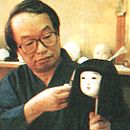|
Maker of Ichimatsu Dolls Toko Shokansai |
 |
Brief Personal History
|
|
Friendship Dolls and Torei Ningyo (Dolls of Gratitude) In the early spring of 1927, an international exchange took place between the children of Japan and America. Over 12,000 "Blue-eyed Dolls" from America were distributed one each to elementary schools and kindergartens throughout Japan. In those days the Showa Era had begun after the death of the Taisho Emperor in 1926, and it was a period when an economic recession was worsening and when thought control was beginning to become more strict. In America, anti-Japanese sentiment was growing with some calling for expulsion of Japanese immigrants, and the U.S. Congress passed a "New Immigration Law" barring Japanese immigration. In contrast, some American people sympathized with the Japanese immigrants who faced great difficulties. The realization of a doll exchange was one way they thought would improve the situation by fostering mutual understanding and friendship between Japan and America. In response to the "Blue-eyed Dolls" that arrived in the spring of 1927, it was decided to give Ichimatsu Dolls to represent Japan. With money from the contributions of one sen (a half cent) each from elementary school students, first-class doll makers in Tokyo and Kyoto made 58 Ichimatsu Dolls. Since the "Blue-eyed Dolls" from America were sent for Hina Matsuri (Doll Festival), the Torei Ningyo (Dolls of Gratitude) from Japan were made quickly so they would arrive in time for Christmas. In the fall of 1927, the Torei Ningyo were sent from Japan and distributed as Friendship Ambassadors to each state in America. My father Toko Shokansai I made 12 of the 58 dolls, including Miss Hokkaido, Miss Yamagata, and Miss Toyama, which were named as representatives of Japan. Many of the doll makers responsible for making the dolls at that time have gone out of business. I think that I am the only one of them who has carried on the tradition and skill from those days. Toko Shokansai II
|